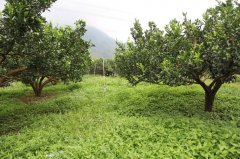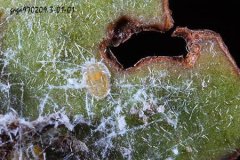What is the insecticidal effect of azadirachtin? What is the insecticidal effect of azadirachtin?
Neem-an insecticide of nature, neem has insecticidal and sterilizing properties and has long been used as an herbal medicine. Do you know its effect on insects, the residual effect of azadirachtin, the systematicness of azadirachtin, the efficacy of azadirachtin products, and so on? If you don't know, let's find out about it.
Indian farmers have long discovered that neem can resist regular locust seeds and leaves, and it has always been a traditional insecticide used by local people to control insects. Indian scientists began to carry out related research in the early 19th century, but it was not until 1959, when German entomologist Heinrich Schmuterer saw thousands of locusts crossing the border in Sudan, neem was the only green plant that could still exist. Want to explore its application value in pest control.
In addition to the anti-feeding effect of azadirachtin, subsequent studies found that azadirachtin strongly interfered with the transmission medium of the synthesis and release of insect youth hormone and desquamate hormone, and affected peeling and reproduction. The results of antifeeding electrophysiological studies showed that the action point of striated white butterfly is the lower jaw cone sensilla on the mouth organ of larvae, so azadirachtin has the characteristics of preventive protection of crops (anti-feeding) and hindering the normal growth of insects (lethal). From the point of view of pest control, this is a great advantage. It is known that more than 200 species of insects and 8 orders belonging to Insecta (Coleoptera, Diptera, Hemiptera, Homoptera, Hymenoptera, Lepidoptera, Orthoptera, Thysanoptera) are sensitive to azadirachtin, which account for more than 90% of all tested insect species. This paper introduces the effect of azadirachtin on insects, the residual effect of azadirachtin, the systematicness of azadirachtin, the efficacy of azadirachtin products and so on.
(1) the effect of neem on insects
The effects of neem products on various insects are as follows:
l. Inhibit the development of eggs, larvae or pupae.
two。 Prevent larvae or adults from peeling.
3. Block communication or mating between male and female worms.
4. Avoid larvae or adults.
5. To prevent females from laying eggs.
6. Make the adults infertile.
7. Poison larvae or adults.
8. Avoid feeding.
9. Inhibit intestinal peristalsis and lose the ability to swallow.
10. Transmit wrong physiological information at all stages of development, interfering with normal metamorphosis.
11. Inhibit the formation of chitin.
(2) residual effect of azadirachtin.
Most of the insect control effect of neem is obtained by feeding or repellent effect of insects after treatment of plants, so its residual effect has a great influence on the insect control effect. Schmutterer pointed out that in the field environment in the tropics, the residual effect of neem could last for an average of 5 days. After purification and separation, azadirachtin can decompose under ultraviolet radiation, but the decomposition of azadirachtin in neem oil is found to be much slower by sunlight simulation test. it shows that some factors in neem oil can maintain and enhance the biological activity of azadirachtin, which can be used as one of the research and development directions to improve the formulation of neem insecticides.
(3) systematic effect of azadirachtin
The existing experimental results show that azadirachtin applied to plants can not migrate, but seed extracts soaked in the roots of potted plants can effectively prevent leaf-eating insects from eating. For example, soaking water-soluble seed extract in potted cabbage will make white butterflies avoid food, and the cut of chrysanthemum is partially soaked in the extract, which has the same effect on Liriomyza huidobrensis, but the new leaves can not be protected. If the rice seed is soaked in the seed extract before sowing, the black-tailed leafhopper feeds on the seedlings and the mortality will increase. These examples show that the neem extract has a systematic effect.
- Prev

Orchard grass cultivation: orchard grass growing technology, orchard grass planting and management
At present, many fruit growers engaged in organic and traditional cultivation have implemented grass cultivation, and the orchard presents a green scene, which is full of ecological beauty. However, there may be many problems in the implementation of grass cultivation in orchards, such as not only parasitic vectors but also competition for soil with fruit trees.
- Next

What are the types of whitefly, whitefly and whitefly?
Whitefly spiralis is a new invasive pest in Hainan Province, which has the characteristics of multiple modes of transmission, multiple host species and rapid reproduction. Then its morphology and life history and harm, you want to know about it, this is a good help to control spiraling whitefly. twist
Related
- A one-day flower show brings 130 million yuan in orders! Nanhai, this Phalaenopsis exhibition is amazing
- What do the flower language and meaning of Lutheran tree mean? Precautions for planting Lutheran tree
- Encounter Chaoshan Kongfu tea, not without this cup of Phoenix single clump
- The durian market in Vietnam and Thailand is flooded. The price of imported durian has plummeted by 30-40% in a month.
- Shanghai solved the problem of local vegetable supply by planting 80,000 mu of green leafy vegetables.
- Wageningen University has become the best agricultural university in the world for the seventh time in a row.
- The strongest export season of South African grapes is full of challenges, with exports to Russia falling sharply by 21%.
- Sri Lanka is on the verge of bankruptcy, "Tea for debt" Organic Agriculture Revolution aggravates the Food crisis?
- Turning waste into earthworm manure and worm manure into organic fertilizer-A new choice for auxiliary farming
- Organic rice growers shoulder the responsibility of nurturing agricultural talents! Yinchuan Sustainable Farm with Organic Life Camp

